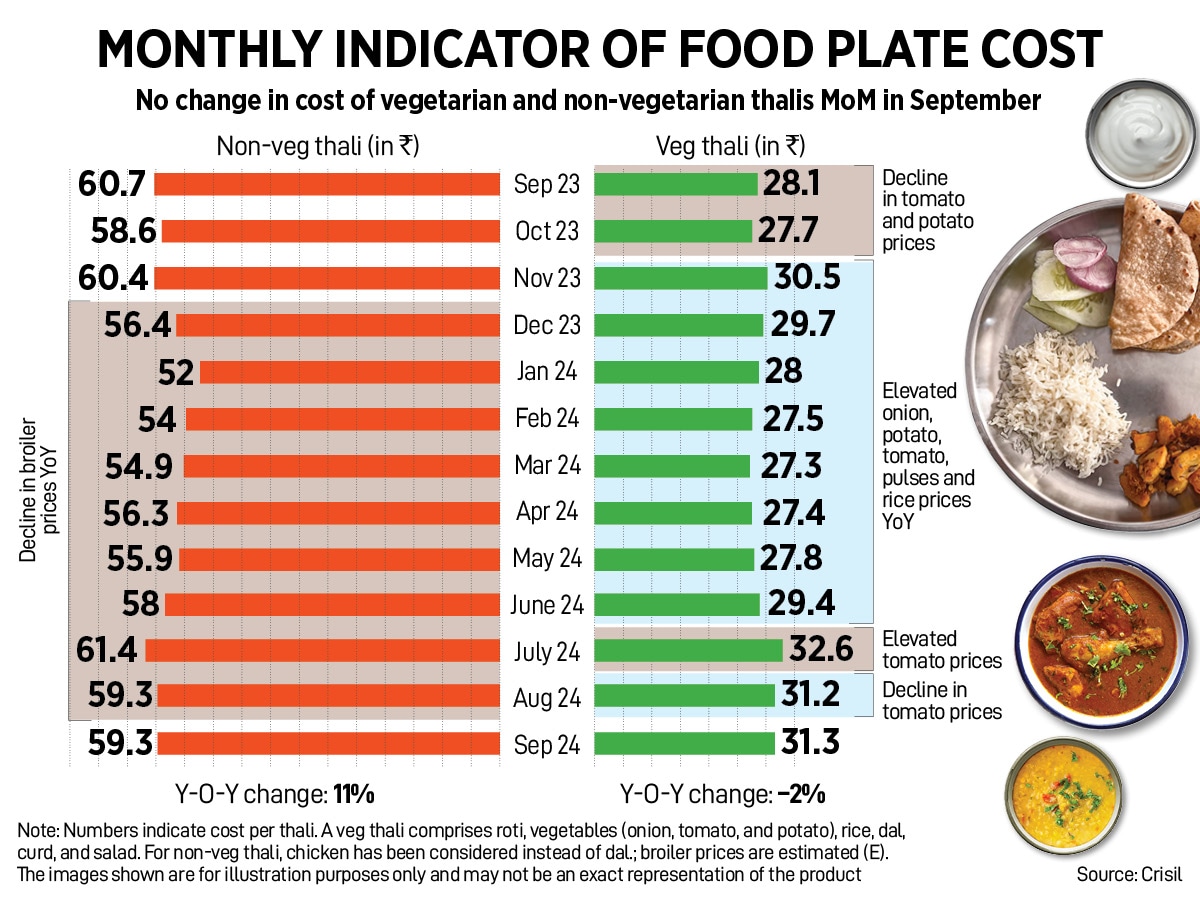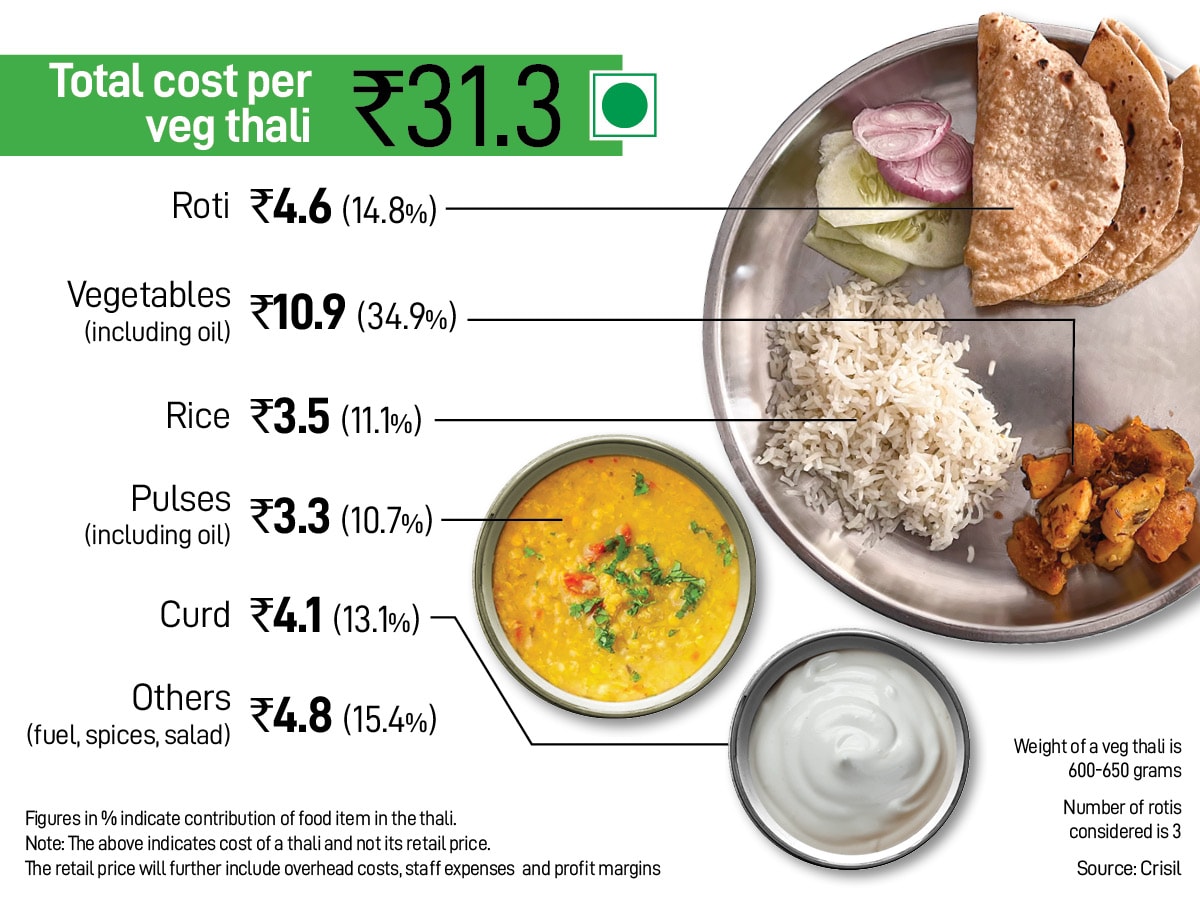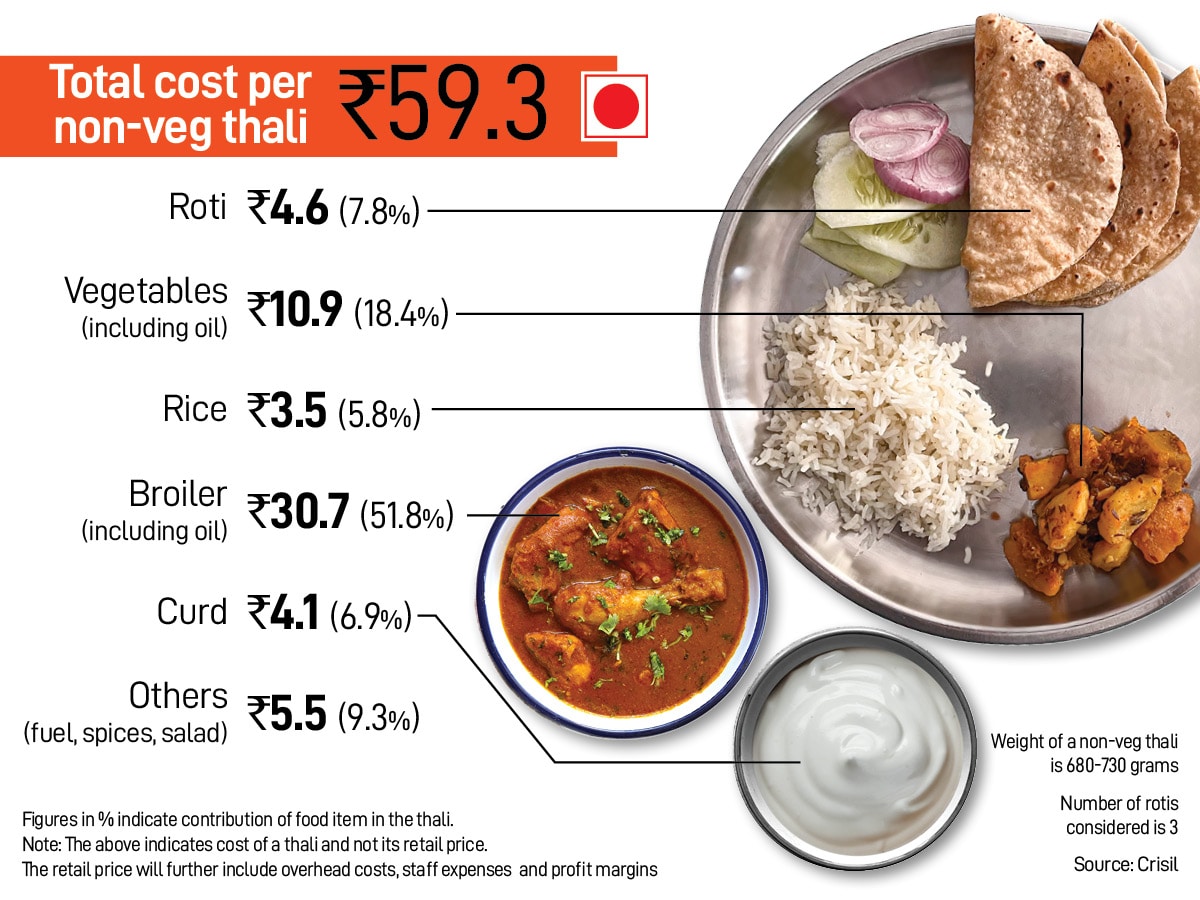
How India Eats: Tomato, onion, potato drive veg thali cost higher in September
Lower onion and potato arrivals in the market and heavy rainfall impacting tomato output in Andhra Pradesh and Maharashtra led to the higher price of TOP in September

Increasing prices of tomato, onion and potato (TOP) and pulses made the vegetarian thali expensive in September. However, prices of non-vegetarian cooled off in the month with a decrease in the broiler chicken price.
The average price of a home-cooked vegetarian thali jumped by a whopping 11 percent to Rs 31.3 in September from Rs 28.1 in the year-ago period, shows a Crisil analysis. The veg thali got expensive due to a rise in the prices of vegetables, which collectively account for 37 percent of the thali cost.
Lower onion and potato arrivals in the market and heavy rainfall impacting tomato output in Andhra Pradesh and Maharashtra led to the higher price of TOP. Prices of onion jumped 53 percent, potato rose 50 percent and tomato prices were 18 percent higher (YoY) in September. Also, the price of pulses jumped 14 percent due to lower production last year, leading to low stock this year. Price of pulses accounts for 9 percent of the vegetarian thali cost.

Compared to the previous month, onion prices rose 14 percent in September due to limited rabi stock in the market while reduction of export duty triggered costs. However, potato prices declined in September from last month as old stocks were released from cold storage. Even tomato prices fell 9 percent month-on-month due to higher arrivals from southern and western markets.















